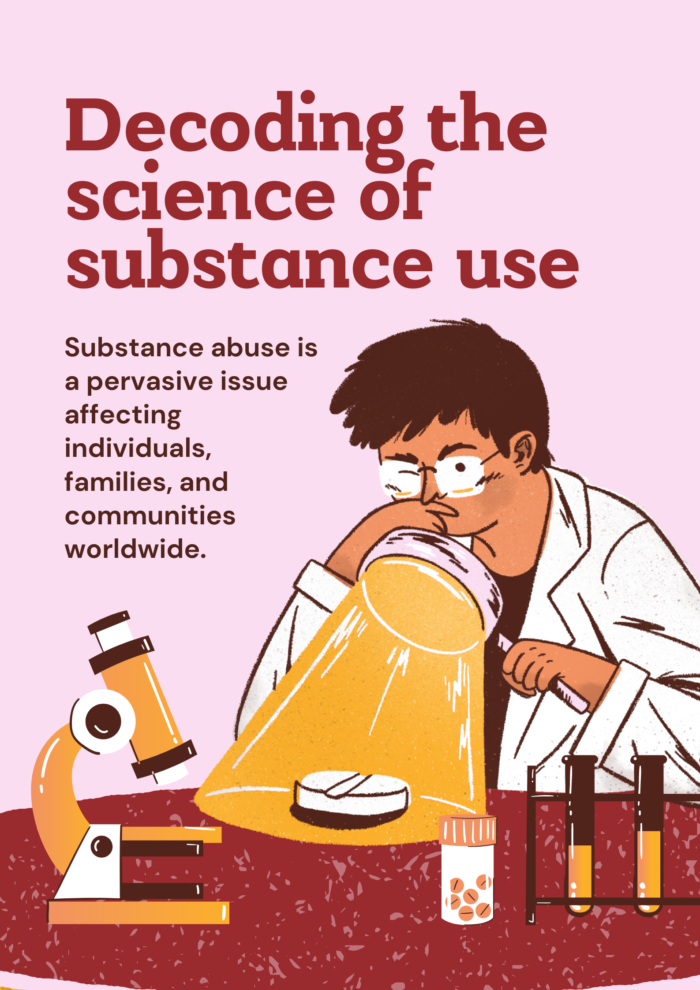
Understanding its multifaceted realities is crucial to addressing the epidemic effectively. This article delves into the complexities of substance abuse, highlighting its causes, consequences, and potential pathways to recovery.
Causes of Substance Abuse
Substance abuse often stems from a combination of genetic, environmental, and psychological factors. Genetics can predispose individuals to addiction, making them more susceptible to the effects of drugs and alcohol. Environmental influences, such as peer pressure, family dynamics, and socioeconomic status, play a significant role in an individual’s likelihood of experimenting with substances. Psychological factors, including stress, trauma, and mental health disorders, further compound the risk, leading individuals to use substances as a coping mechanism.
The Physical and Mental Toll
The physical consequences of substance abuse are severe and varied. Chronic use of drugs and alcohol can lead to numerous health issues, including liver disease, cardiovascular problems, respiratory issues, and neurological damage. For instance, prolonged alcohol abuse can result in cirrhosis of the liver, while opioid addiction can cause respiratory depression and overdose fatalities.
Mental health is profoundly affected by substance abuse. Many individuals with substance use disorders also suffer from co-occurring mental health conditions such as depression, anxiety, and bipolar disorder. Substance abuse can exacerbate these conditions, creating a vicious cycle where mental health issues and addiction feed into each other, making recovery even more challenging.
Social and Economic Impact
The impact of substance abuse extends beyond the individual, affecting families and communities. Families often experience emotional and financial strain as they try to support their loved ones through addiction and recovery. Children of parents with substance use disorders are at a higher risk of neglect, abuse, and developing their own substance use issues.
Economically, substance abuse imposes a significant burden on society. Healthcare costs, lost productivity, and criminal justice expenses add up to billions of dollars annually. Employers face absenteeism, decreased productivity, and higher healthcare costs due to employees struggling with addiction. Communities also bear the brunt, with increased crime rates and strained public resources.
Pathways to Recovery
Despite the daunting realities of substance abuse, recovery is possible with the right support and resources. Treatment approaches vary but often include a combination of detoxification, counseling, medication-assisted treatment, and support groups. Detoxification is the first step, helping individuals safely withdraw from substances under medical supervision.
Counseling and therapy are critical components of recovery, addressing the underlying psychological issues contributing to substance abuse. Cognitive-behavioral therapy (CBT) and other evidence-based therapies help individuals develop coping strategies and healthier thought patterns. Medication-assisted treatment (MAT) can be particularly effective for opioid and alcohol addiction, reducing cravings and withdrawal symptoms.
Support groups, such as Alcoholics Anonymous (AA) and Narcotics Anonymous (NA), provide a sense of community and accountability, helping individuals stay committed to their recovery journey. These groups offer a platform for sharing experiences, receiving encouragement, and building a network of support.
Understanding the realities of substance abuse is essential for developing effective prevention and treatment strategies. It is a complex issue influenced by various factors, causing significant physical, mental, social, and economic harm. However, with comprehensive treatment and support, individuals can overcome addiction and lead fulfilling, healthy lives. Addressing substance abuse requires a collective effort, involving individuals, families, communities, and policymakers working together to create a supportive environment for recovery.